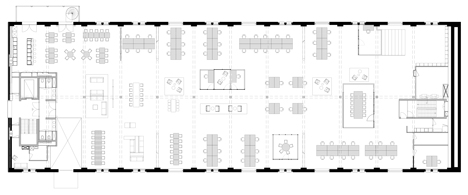Fairphone's Amsterdam offices built inside an old warehouse using reclaimed materials
The Amsterdam offices of smartphone manufacturer Fairphone were created inside a former industrial building – and informed by the same sustainable design principles the company uses for its products (+ slideshow).
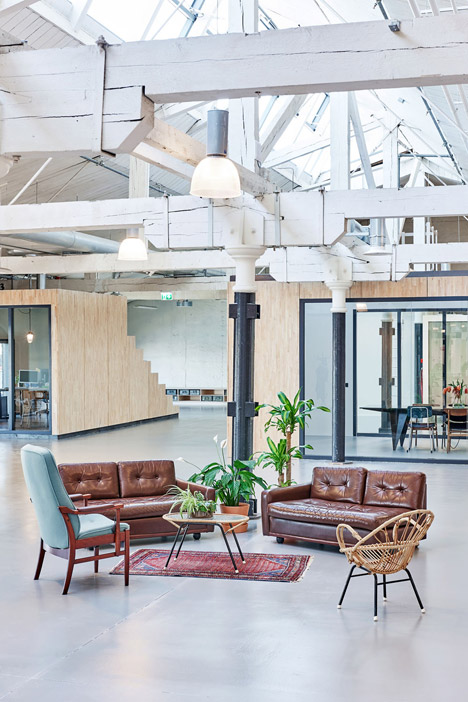
Fairphone aims to make its Android devices from ethically sourced materials, following a modular design that allows users to swap and replace defunct components rather than buy a new phone. Its first model was launched in 2013, and the Fairphone 2 is set for release this autumn.
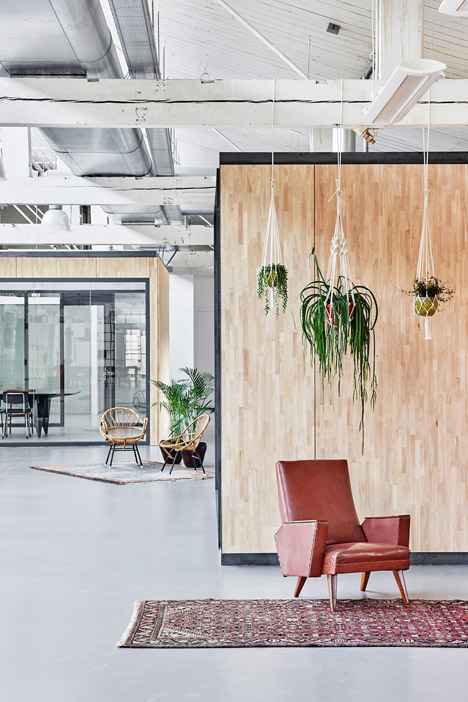
The company wanted this ethos to translate through to the interior for its new workspace, located in a warehouse building along Amsterdam's northern docks that dates back to 1884.
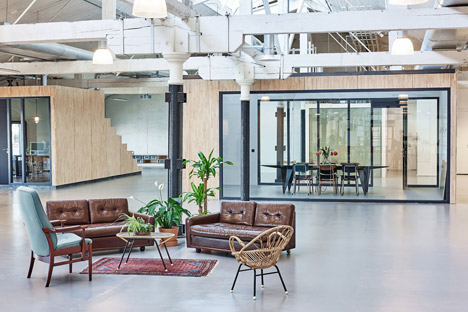
Melinda Delst Interior Design and Studio Modderman, both based in the city, worked together to create the head offices for Fairphone within the former industrial space.
"The brief for the company's new headquarters was an open-plan, transparent office emphasising reused and environmentally friendly materials," said Melinda Delst. "With a deadline of just two and a half months, the challenge was to translate the brief with creative ways of reusing materials, in a short space of time with a limited budget."
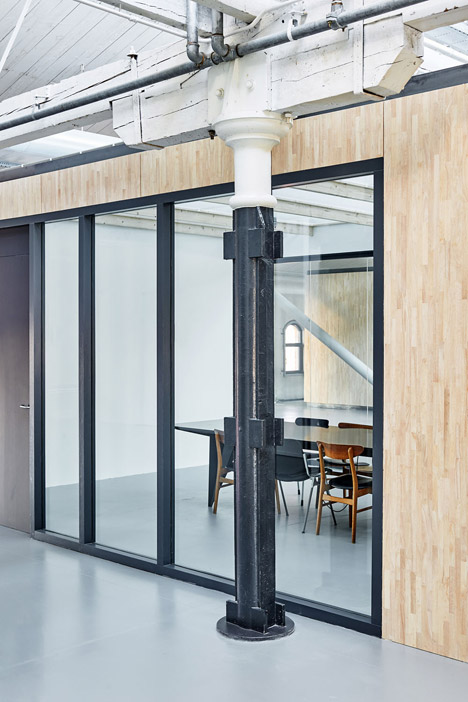
The design team retained the majority of the warehouse's original structural components, including the expansive wooden roof trusses and supporting steel columns.
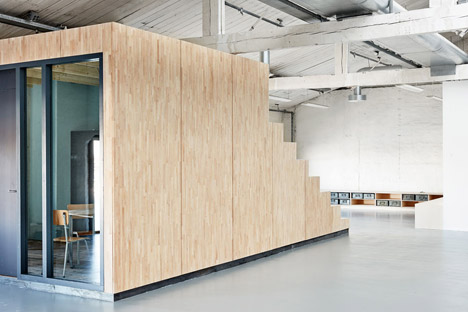
"Most of the original structural features of the warehouse were left untouched," said Delst. "This created a logical placement of the workspaces by the window for great daylight and views of the city."
The rectangular floorplate is dotted with wooden boxes, built to house meeting rooms and also to break up the open-plan space.
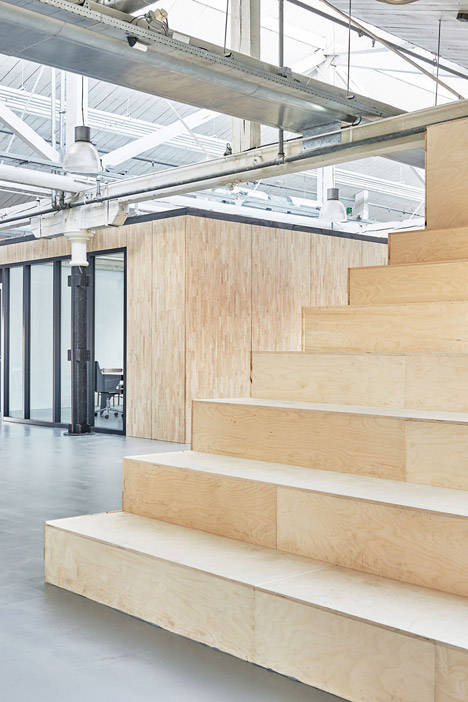
These standalone rooms, which provide meeting spaces and Skype booths, have glazed walls made using reclaimed window frames from the building's previous tenants.
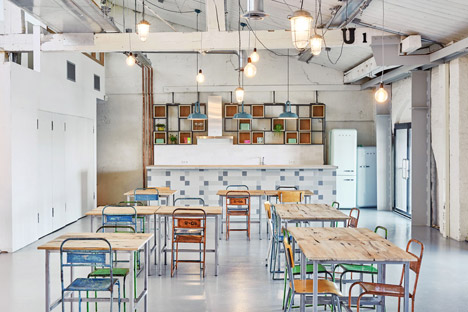
The other sides are clad with old floorboards made from rubberwood – a light-coloured, medium-density tropical hardwood that is harvested as a waste product of the latex industry once the rubber trees have been stripped of their natural polymers.
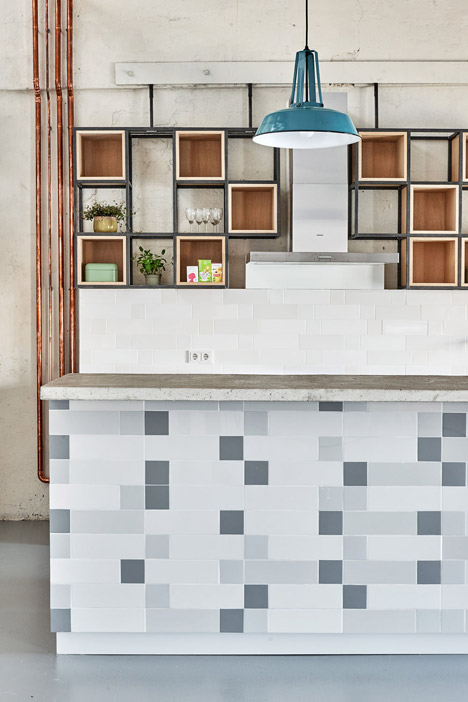
The designers also used this wood to form a set of bleachers – stairs you can sit on – on the back of one of the pods, creating an area for larger meetings and talks.
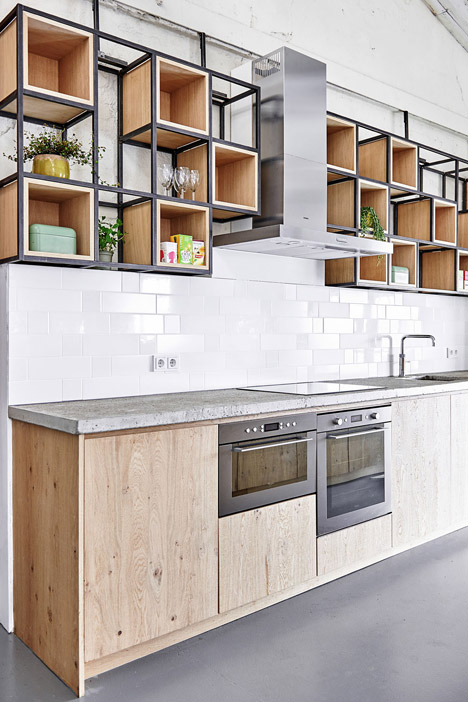
This type of informal seating is becoming increasingly common in offices, with technology companies Evernote and Eventbrite having recently introduced similar designs.

Other seating areas are created in unused areas between the desks and the cube rooms, using mismatched second-hand furniture arranged like small living rooms. Vintage lamp shades and hanging plants are suspended from the roof beams.
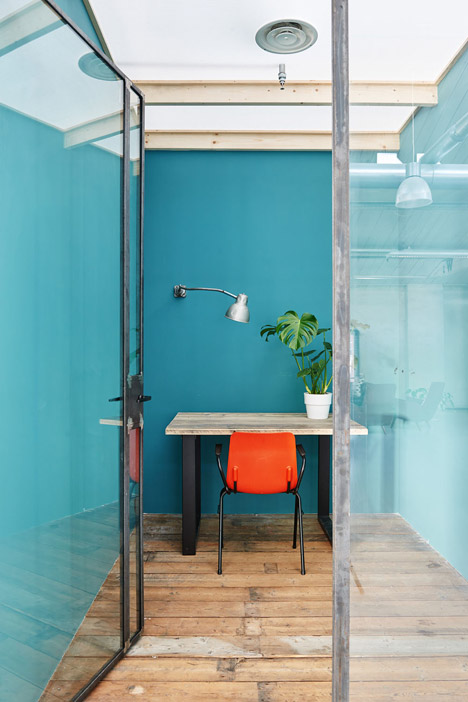
Beside the entrance, a kitchen area is located behind a bar clad with grey tiles. On the back wall, wooden boxes with open fronts are slotted into a metal grid to provide storage compartments.
Photography is by James Stokes.
